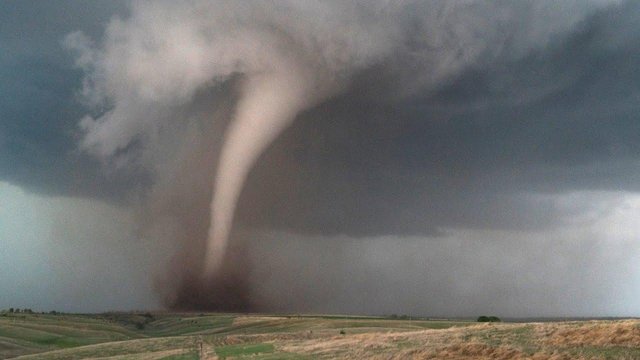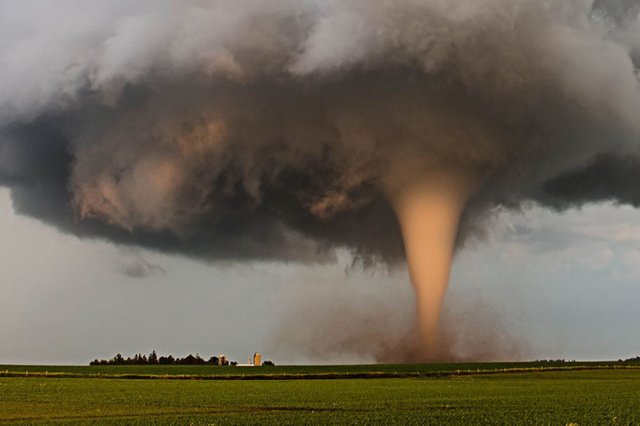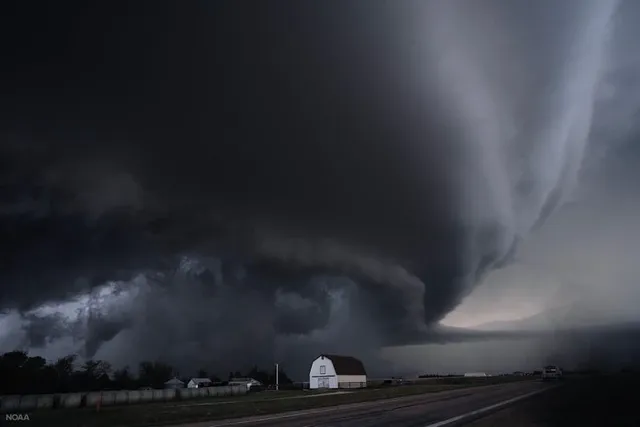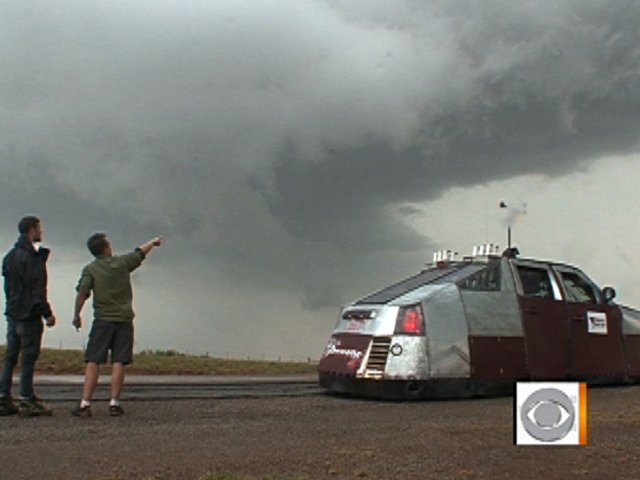CHASE A GIANT TORNADO
Tornadoes are some of the most violent and dangerous natural events on Earth. Every year in the United States, more than a thousand tornadoes spring up; many of them amount to nothing, while others tear across the landscape for hours, causing mayhem and destruction. A few really rare tornadoes obliterate whole communities. Next summer, take a three-week vacation in the central plains and go storm chasing.

WHAT IS A TORNADO?
Tornadoes are rotating columns of air that extend from the ground to the cumulonimbus clouds in the sky. Warm, humid air at ground level spins as it rises and meets colder air higher up; combine this with a large rotating thunderstorm (“supercell”) overhead and you’ve got the conditions for a killer tornado. About one in a thousand thunderstorms become supercells, and two in six of those generate a tornado. You need to know a lot about the weather, or hang around with someone who does, to stand a chance of getting up close to a tornado, and doing so safely.
The Enhanced Fujita Scale
One thing you’ll need to know about as an amateur storm chaser is the Enhanced Fujita Scale. This is the scale on which the severity of a tornado is rated on a scale of 0 to 5. An EF0 tornado can register wind speeds at as little as 65 mph and cause little to no damage. An EF5 tornado, on the other hand, can register speeds above 200 mph and leave entire towns destroyed in its wake.

WHEN AND WHERE
In the US, about 40 percent of tornadoes appear in the central plains between March and July. Boulder, Colorado—at the foot of the Rocky Mountains—makes a good base camp because you can see for hundreds of miles across the plains, spot the supercells, and drive right to the action.

TECHNOLOGY AND EXPERIENCE
Tornado chasers drive around in vans that are packed with antennae and satellite dishes, and they have banks of screens, computers, and other sophisticated devices to help them predict what’s happening with the weather. The successful ones are also staffed with incredibly experienced people. You can’t just jump in a pickup and head for the nearest storm clouds, because you’ll put yourself in extreme danger. Don’t chase tornadoes on your own. You’ll reduce your odds of seeing one and increase your chances of getting injured.
For your first season, try to hook up with a seasoned storm chaser; many have dedicated social media followings and YouTube channels, making them much easier to find than in the past. Another option is to book a packaged “tornado safari” with a tour firm of skilled chasers. Be sure to research tour options thoroughly, and stick with well-established and well-reviewed groups—chasing tornadoes is not something you’ll want to go with the budget option on.

GET USED TO TRUCK STOP CATERING
You will cover hundreds of miles, and the rest of the time you’ll be sitting around snacking on truck stop food, waiting for things to kick off. On the road, your biggest dangers aren’t tornadoes; they are more mundane threats such as hydroplaning, flat tires, or being struck by lightning. Most likely, you won’t even see a tornado at all, just lots of rain, hailstones, and Twinkies.

https://parade.com/24851/viannguyen/when-are-twinkies-returning-to-stores/
https://www.cbsnews.com/news/why-storm-chasers-do-what-they-do-and-how/
Forbidden Knowledge 101 Things No One Should Know How to Do